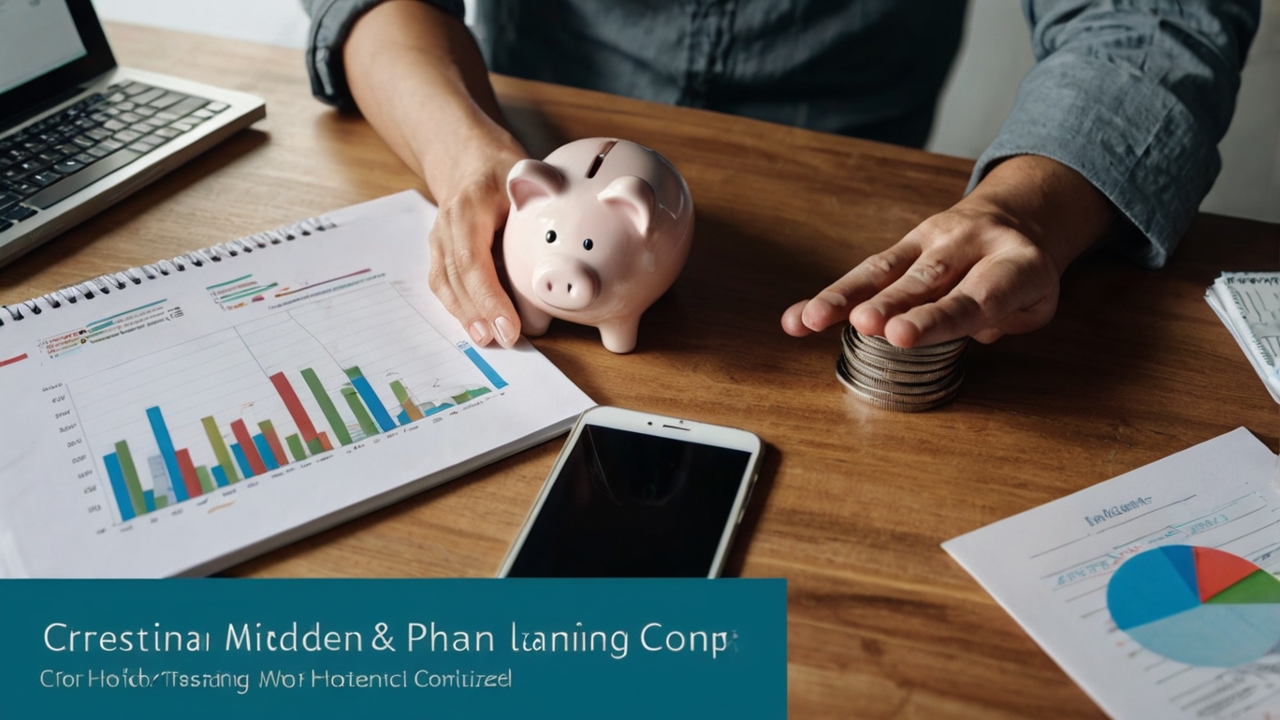Emergency Fund: The Financial Safety Net for the Arab Family
In a world filled with economic fluctuations and unexpected events, having an emergency fund becomes a financial safety net for the Arab family. This fund is not just a sum of money saved, but the first line of defense against crises that may shake the family's financial stability. From job loss to emergency medical expenses, an emergency fund provides peace of mind and the ability to deal with challenges confidently.
Chapter 1: The Importance of an Emergency Fund in the Arab Context
Arab societies are characterized by unique social and economic characteristics, making an emergency fund even more important. Reliance on a single income, high cost of living, or extended family responsibilities all increase the need for emergency savings. Imagine a scenario where the family's main breadwinner loses their job; how will the family be able to cover their basic expenses? This is where the emergency fund shines as a savior.
Real-World Examples from the Arab Market
- Saudi Arabia: Under Vision 2030 and economic changes, many individuals face new challenges in the labor market.
- Egypt: High inflation rates and their impact on citizens' purchasing power.
- Lebanon: The severe economic crisis and its devastating impact on savings and financial stability.
Chapter 2: Determining the Appropriate Size of the Emergency Fund
There is no magic number that fits everyone. The appropriate size of the emergency fund depends on several personal and family factors. The golden rule is to cover basic living expenses for at least 3 to 6 months. However, the specific circumstances of each family must be taken into account.
Factors Affecting the Size of the Fund
- Stable Monthly Income: The more stable the income, the smaller the fund can be relatively.
- Number of Family Members: The more individuals, the higher the expenses and therefore the need for a larger fund.
- Employment Status: Employees in stable jobs may need a smaller fund than self-employed individuals or business owners.
- Financial Obligations: Having large loans or monthly installments requires a larger fund.
- Health Insurance: Having comprehensive health insurance reduces the need to cover emergency medical expenses.
Chapter 3: Calculating Basic Expenses
The first step in determining the size of the emergency fund is to calculate the basic monthly expenses. These expenses include rent or mortgage payments, utility bills (electricity, water, gas, internet), food, transportation, healthcare, insurance premiums, and any other necessary financial obligations.
Tips for Calculating Expenses Accurately
- Track Expenses: Use an expense tracking app or spreadsheet to record every penny you spend for at least a month.
- Analyze Data: Analyze the data to identify fixed and variable expenses.
- Estimate Variable Expenses: Estimate the average variable expenses such as food and transportation.
- Add a Safety Margin: Add a safety margin of 10-15% to cover any unexpected expenses.
Chapter 4: Where to Keep the Emergency Fund
The emergency fund should be easily accessible but also safe. Common options include high-yield savings accounts, money market accounts, and short-term certificates of deposit. Avoid investing the emergency fund in high-risk investment instruments such as stocks or cryptocurrencies.
Comparison of Available Options
| Option | Advantages | Disadvantages |
|---|---|---|
| High-Yield Savings Accounts | Easy access, high liquidity, better return than regular savings accounts | Return may not keep up with inflation |
| Money Market Accounts | Higher return than savings accounts, high liquidity | There may be withdrawal restrictions |
| Short-Term Certificates of Deposit | Guaranteed return, safe | Difficulty accessing money before the maturity date |
Chapter 5: Building the Emergency Fund Step by Step
Building an emergency fund may seem like a daunting task, but it can be achieved by following simple and organized steps. Start by setting a realistic goal, then create a savings plan and stick to it.
Practical Steps to Build the Fund
- Set a Realistic Goal: Start with a small goal such as saving one month of basic expenses.
- Create a Savings Plan: Determine a specific amount to save each month and stick to it.
- Automate Saving: Automatically transfer a specific amount from your checking account to the emergency fund savings account.
- Reduce Expenses: Look for ways to reduce unnecessary expenses and increase the amount you can save.
- Increase Income: Look for ways to increase your income such as overtime or freelance work.
Chapter 6: Dealing with Emergencies
When faced with an emergency, it is important to act wisely and rationally. Do not hesitate to use the emergency fund to cover necessary expenses, but avoid using it for unnecessary purposes.
Tips for Dealing with Emergencies
- Assess the Situation: Assess the situation and determine if the situation warrants using the emergency fund.
- Prioritize: Identify necessary expenses and prioritize them.
- Look for Alternatives: Before using the emergency fund, look for other alternatives such as getting a loan or help from family and friends.
- Replenish the Fund: After using the emergency fund, start replenishing it as soon as possible.
Chapter 7: Common Mistakes in Managing the Emergency Fund
There are several common mistakes people make in managing the emergency fund, such as not having a fund at all, using it for unnecessary purposes, or investing it in high-risk investment instruments.
Avoid These Mistakes
- Not Having a Fund at All: This is the biggest mistake. Start building an emergency fund today.
- Using it for Unnecessary Purposes: Do not use the emergency fund to buy unnecessary things or to cover recreational expenses.
- Investing it in High-Risk Investment Instruments: The emergency fund should be safe and easily accessible.
- Not Replenishing it After Use: After using the emergency fund, start replenishing it as soon as possible.
Chapter 8: The Role of Financial Planning in Building the Emergency Fund
Comprehensive financial planning plays a crucial role in building and maintaining the emergency fund. By creating a monthly budget and setting long-term financial goals, you can allocate a portion of your income to build the emergency fund and achieve financial stability.
Tips for Effective Financial Planning
- Create a Monthly Budget: Track your income and expenses and allocate a portion of your income to build the emergency fund.
- Set Financial Goals: Set long-term financial goals such as buying a house or retirement, and allocate a portion of your savings to achieve these goals.
- Review the Plan Regularly: Review your financial plan regularly and adjust it as needed.
- Get Professional Advice: If you need help, consult a qualified financial advisor.
Chapter 9: Emergency Fund and the Arab Woman
Arab women play an increasingly important role in managing family finances. Having her own emergency fund can give her financial independence and protection in cases of divorce, widowhood, or job loss.
Importance of the Emergency Fund for Women
- Financial Independence: Gives her the ability to make independent financial decisions.
- Protection in Cases of Divorce or Widowhood: Provides her with a financial safety net in emergencies.
- Support for Small Businesses: Can be used to finance small businesses that help her achieve financial independence.
Chapter 10: Emergency Fund and Investing
The emergency fund is not a substitute for investing, but a complement to it. After building the emergency fund, you can start investing your money to achieve your long-term financial goals. Remember that investing carries risks, so you should choose the investment instruments that are appropriate for your investment profile and risk tolerance.
Tips for Investing After Building the Emergency Fund
- Set Investment Goals: Set your long-term investment goals such as retirement or buying a house.
- Assess Risk Tolerance: Determine how willing you are to take risks in your investments.
- Choose the Right Investment Instruments: Choose the investment instruments that match your goals and risk tolerance.
- Diversify Investments: Diversify your investments to reduce risk.
- Get Professional Advice: If you need help, consult a qualified financial advisor.
The emergency fund is the cornerstone of financial stability for the Arab family. By understanding its importance, determining its appropriate size, and building it gradually, you can protect yourself and your family from unexpected financial crises and achieve a secure and prosperous financial future.




